




by Douglas Townsend









by Douglas Townsend




In these sections, our vault doors are open and you'll find many long out of print recordings next to favorites. Most titles are downloadable with sound samples and liner notes!

MUSIC OF THE ROMANTIC PIANO/COMPOSER
Followingtheessayonthelifeofthe “virtuoso”,we’verevivedanMHSrecording completelydevotedtothemusicofanera whenaRomanticcomposerwasalsoan essential ingredientofsocietyfunctions.
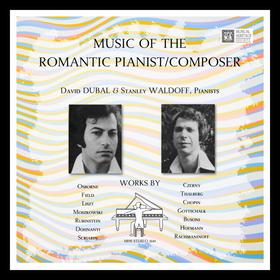
Beethoven from Robert Mann & Stephen Hough




by David White
Through the 60 plus year history of the Musical Heritage Society, the violin reigns as the instrument featured in the most recordings, and also in the roster of Musical Heritage Society artists, there is a stunning array of fine violinists.

For this month’s Main Selection, we shine the spotlight on these fine recordings, and these fine violinists.
The violin is perhaps the most “democratic” of instruments - from its inception, the violin has been embraced by the street performer and the high society virtuoso. Every violin is a fiddle, but not every violinist is a fiddler, you could say.
Most of what you’ll hear on the The Art of the Violin falls on the side of the high society fiddler. Starting with the solo


Most of what you’ll hear on the The Art of the Violin falls on the side of the high society fiddler. Starting with the concertos of Antonio Vivaldi, through the majestic solo sonatas and partitas of Johann Sebastian Bach, into the baroque era, you have the genteel strains of an instrument that makes the heart vibrate. Beethoven’s violin and piano sonatas may be the height of chamber music written for the instrument - we’ve included two of his greatest works on The Art of the Violin, featuring Robert Mann and Pamela Frank as the featured violinists. Oscar Shumsky is featured performing the music of Kreisler, Brahms and Mozart.




Joshua Bell performs the music of Kodaly, with cellist Carter Brey.

CLICK HERE FOR ALL THE INFORMATION
featuring

An all-star tribute to the great violinists on the Musical Heritage Society label.
2 BEETHOVEN: Sonatas for Violin & piano (Mann, Frank)
BRAHMS: Violin Sonatas No. 1 (Shumsky)
KODALY: Duos for Cello & Violin (Joshua Bell)
2 MOZART Sonatas for Violin & Piano (Mann, Shumsky)
SCHUMANN: Violin Sonata No. 2 (Totenberg)
KREISLER: Selected Works (Shumsky)
SIBELIUS: Violin Concerto (Brodsky)
PISENDEL: Violin Concerto (Totenberg)
4 VIVALDI Violin Concertos from “L’Estro Armonico” (Mintz)
BACH: The complete Sonatas & Partitas for Violin (Tetzlaff, Totenberg & Shumsky)
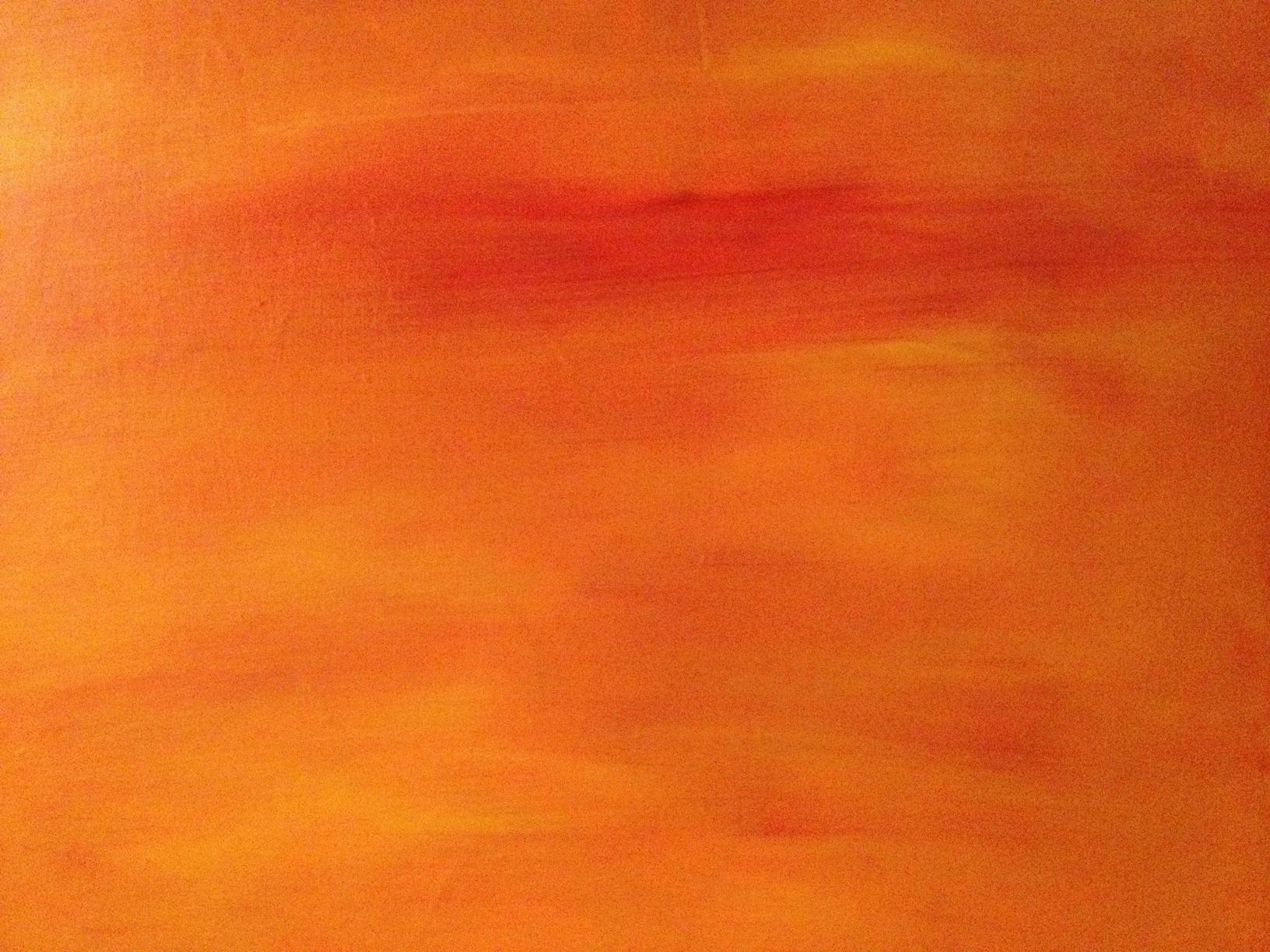


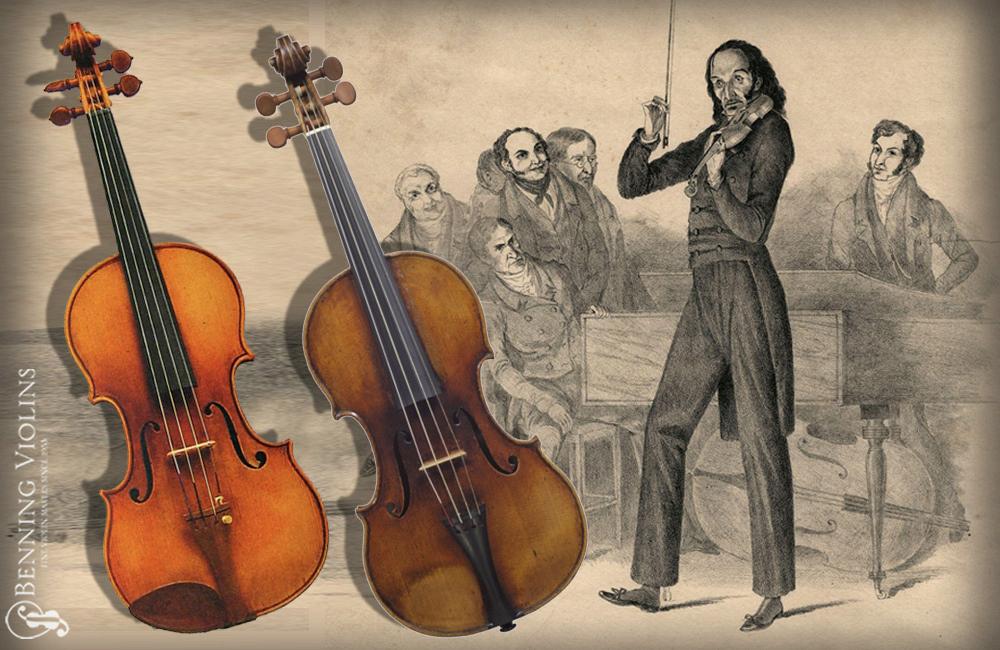
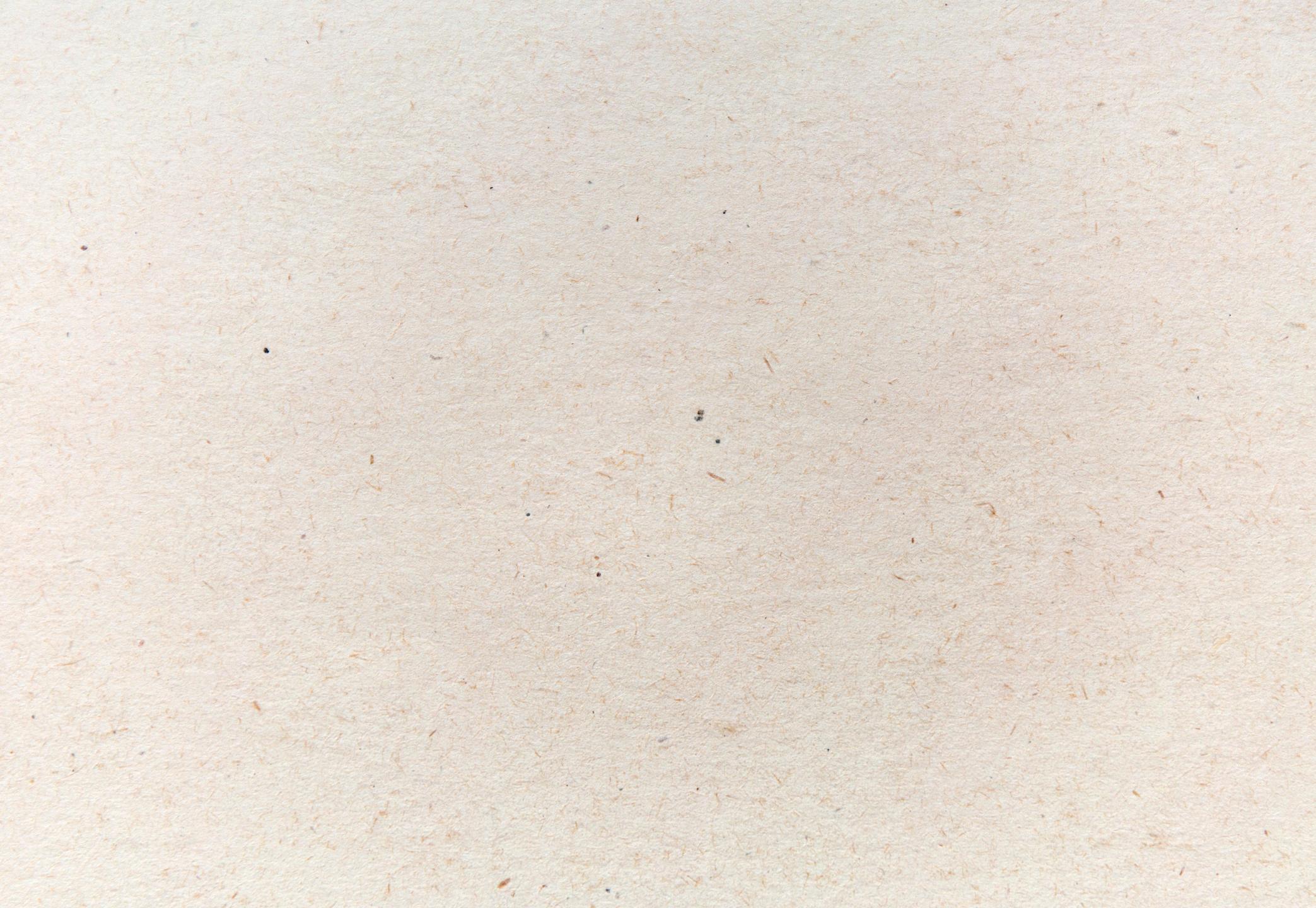
byDouglasTownsend
Eachageproducesitsshareofcomposersandperformerswhoappeardestinedforimmortality AmuchrarerPhenomenon,however,is thecomposerwhoisalsoanoutstandingperformer Thecomposer-virtuosoisespeciallyinteresting,becauseinmanycasesnotonlydo westillhavehismusic,buthehasfrequentlyinfluenced,ifnotrevolutionized,theperformanceofmusiconhisparticularinstrument He has,ineffect,becomeoneoftheimmortalsasmuchforhiscompositionsasforhismannerofplayingthem
TakeCorelli,forinstance.Atatimewhennearlyeverycomposerwaswritingvocalandinstrumentalmusic,hewroteonlyforoneortwo violins,orforstringorchestra Eveninhisown,verylimitedsphere,hewaslimited Hehaddifficultyinplayinganoperaovertureof Handel,explainingthatitwas"intheFrenchstyle,ofwhichIhavenoexperience",andthebrilliantplayingofAlessandroScarlatti's orchestraastoundedhim
Still,withinhislimitations,CorellididalmostasmuchforviolintechniqueasScarlattididforNeapolitanopera Thereisapurityofstyle, aclassicism,inhisconcertigrossi,whichislackinginthoseofsay,HandelorVivaldi Whilethereisgenerallyalackofbrilliancein Corelli'sworks,thewritingisclear,refined,andalmostaristrocratic TheslowmovementsofhisSonatasforViolinandContinuo,Opus 5(MHS1690-92),containanexpressivenessofstyleattimesborderingonpathos,whichwascompletelynewforthetime Thelyrical qualityofhismelodiesappealedtohiscontemporaries,sothatwefindasimilarsingingstyleintheslowmovementstoHandel'sviolin sonatas,andeveninEngland,PurcellacknowledgedtheinfluenceofCorelli'ssonatasfortwoviolinsandcontinuo InFrance,Couperin acknowledgedCorelli'scontributiontothedevelopmentofmusicandstringtechnique,inhisApotheosistoCorelli(MHS521)fortwo violinsandcontinuo ItisnocoincidencethatyoungvioliniststodayarestartedoffontheworksofCorelliandHandel,sincethatis wherethe"singing"styleofviolinplayingbegins
Bach,BeethovenandLiszt,threecomposer-keyboardvirtuosiwhochangedthenatureofkeyboardplaying Well,actuallyBachand Beethoven didn't change keyboard technique as much as they summed up centuries of writing for their instrument Beethoven, for example,madeitpossibleforacomposerlikeLiszttoactuallydevelopanewstyleofkeyboardtechniqueonlyhintedatintheworksof WeberandHummel
Nearlyeverymusic-loverisawareofthefactthatBachwrotepreludes,toccatasandfuguesfortheorgan Thedifferencebetween Bach'sworks,andsay,thoseofBuxtehude,KuhnauandPachelbel,hisexactcontemporaries(andquite


apart from their musical content), is their length and the technicalskillrequiredtoplaythem Foronething,theuseof the pedals in Bach's organ works is far greater than is generally found in the organ music of the other composers, and the manner in which he used them sometimes leaves one wondering if the part was not really played by a third hand.Thissortoftechniquedoesoccuroccasionallyinsome Buxtehude preludes and fugues, but the pedals rarely receive the constant use one finds in Bach's organ works Also, the length of Bach's preludes and fugues is generally considerably greater than most of those by Buxtehude In brief,whileBuxtehude,KuhnauandPachelbelwroteagreat deal of fine organ music, their pieces are generally considerablyshorterandsimplerthanthoseofBach
Another important contribution of Bach as a keyboard virtuoso and composer, are his concerti for one or more harpsichords and orchestra By applying Vivaldi's technique of writing concerti for one or more violins and orchestra, to the harpsichord, Bach developed a concerto which had literally never existed before This was a real contribution, and in terms of musical history almost as important as the harmonicinnovationsofStravinskyandSchoenberg Itmust beemphasizedthough,thatBachdidnotdeliberatelysetout to do something new and different. Being a virtuoso on the harpsichord, he merely wrote a lengthy and technically demanding work for himself to play on one of his favorite instruments with the accompaniment of a string quartet or string orchestra From this simple, almost accidental beginningduringthefirstquarterofthe18thcentury,came thefirstharpsichordandpianoconcertibyhissons,Wilhelm Friedemann,PhilipEmanuelandJohannChristianBach,and then, within fifty years, the great piano concerti of Mozart-allbecauseoftheneedofachurchorganistandharpsichord playertomakemusicwithhisfamily,friendsandstudents!
Inthe1770'sand80's,therewerestillpeoplealivewhohad been personally acquainted with Bach, and who preferred the sound of the harpsichord and that of the piano The earliest keyboard pieces of young Beethoven, in fact, were written to be performed on either the harpsichord or piano, andaslateas1802heindicatedthatthepianosonatasopus 31 could be performed on either instrument, though it is probablethatthiswasmorefromhabitthanintention.
By 1800 Beethoven had been living in Vienna almost ten years,andwaswellonhiswaytobecomingoneofthatcity's leading composers The nobility, however, regarded him primarilyasapianisttoperformattheirmusicales,andasa teacherofthemselvesandtheirchildren
Thereareseveralaccountsofhispianoplayingdatingfrom aboutthistime,nearlyallofthemlaudatory.Itwasgenerally
agreed that he was without a peer when it came to improvisation, although as a pianist, that is, as a technician, he had his equals in Joseph Wolfl and Johann Cramer. Although his writing for the piano didn't change radically until his last piano sonata, his contemporaries were quick to compare his playing to that of Mozart and his student Hummel According to Czerny , who studied piano and composition with him,
"If Beethoven's playing was notable for its tremendous power, character, unheard-of bravura and facility, Hummel's performance, on the other hand, was a model of all that is clean and distinct, of the most charming elegance and delicacy ... since he combined Mozart's manner with the Clementi school so wisely adapted to the instrument Hummel's followers reproached Beethoven with maltreating the fortepiano, said his playing was devoid of purity and distinctness, that his use of the pedal produced only a confused noise, and that his compositions were labored, artificial, unmelodious, and in addition irregular in form Beethoven's partisans, on the other hand, asserted that Hummel lacked all real imagination, declared his playing was as monotonous as that of a hurdy-gurdy, that he held his fingers clawed in, spider-fashion, and that his compositions were mere elaborations of Mozart and Haydn themes "
Now, while Beethoven did not develop a truly new piano technique, the way Chopin and Liszt did, he added a breadth and intensity of emotion to his works which were new One has only to compare, for example, the slow movements of the "Hammerklavier" Sonata, opus 106 (MHS 125), and that of the Sonata opus 7 (MHS 117), or 10/1 (MHS 118) to hear the difference Despite the intensity of the earlier slow movements, one is still aware of their classical lineage because of the thematic content, development and setting for the piano Although the slow movement of opus 106 still shows its classical heritage structurally, Beethoven has carried 18th century piano technique almost as far as he could without actually developing a new style Quite apart from the musical content, one finds a spaciousness, and a sonority in this movement generally lacking in his more "classical," earlier sonatas This openness in writing for the piano is characteristic of several movements of the later sonatas and miscellaneous pieces. Although Beethoven's later works are generally regarded as harbingers of romanticism, this is a result of the musical ideas, the musical personality of the man, as it were, and should not be confused with his writing for the piano, which is generally rooted in a kind of post-Mozartian piano technique One has only to read or listen to some of the piano works of his younger contemporary, Weber (who, by the way, died two years before Beethoven), to understand the difference between the waning 18th century pianistic style, and the about-tobreak-forth new technique of the Chopin/Liszt school.


It was Chopin, who actually synthesized the piano technique of Hummel and Weber, and produced what amounted to a new pianistic style The bravura of Weber, the legato, flowing style of Hummel, and Chopin's own gift for lyricism, all combined to make a new style of writing and playing which utilized the sonorities of the piano to its fullest The technique required to play a sonata of Beethoven is quite different from that called for in a Chopin Etude or Ballade. Not only is the digital dexterity different, but the use of tone control and pedaling are almost as far removed in Chopin's music as the sound and technique of the' harpsichord is from that of the piano
It remained for Liszt, however, to carry the new but primarily intimate style of playing to heights that Chopin himself hardly every achieved In 1837, Henry Chorley summed up Liszt's pianistic antecedents-, when he wrote that Liszt is
''The real diamond among much that is paste--the real instrumentalist among many charlatans the most limited among purists must confess his prodigious mastery over his instrument and must be willing to regard him not merely as the successor of Clementi, Hummel and Moscheles but as one in whom the piano, so far, from being the end, is but the means of expressing certain emotions "
Liszt's phenomenal technique was not acquired without a great deal of hard work. He wrote that
“ My mind and my fingers are working like two convicts Homer, the Bible, Beethoven, Bach, Hummel, Mozart and Weber are all around me I study them, meditate on them, devour them avidly And I do four to five hours practice as well--thirds, sixths, octaves, tremolos, repeated notes, cadenzas etc If I don't go mad you will find me an artist such as is needed today "
Liszt, then, not only was technically equipped to play the music of Bach, he could also perform Mozart and late Beethoven, as well as the "new-style" introspective music of Chopin and Schumann, and the bravura works of Thalberg, Kalkbrenner and Herz Chopin is said to have been less than happy at Liszt's being able to imitate his style of playing so well that in a darkened room no one knew which of them were performing
Although much has been made of Paganini's influence upon Liszt, it is often forgotten that he was not thinking in terms of showmanship at this time, rather it was the ability to play as well upon piano as the great violinist did upon his instrument "You see my piano is for me what his frigate is to a sailor," he once wrote, "or his horse to an Arab--more indeed: It is my very self, my mother tongue, my life Within its seven

octaves it encloses the whole range of an orchestra, and a man's ten fingers have the power to reproduce the harmonies which are created by hundreds of performers ''
Liszt was more than a pianist, however, he was a composer and many of his piano works not only make full use of the new developments of piano playing, he was also able to combine the forms and technique of the past, to suit the purpose of his own time. We find him writing fugues in a kind of "modern" adaptation of the Baroque style, "up-dated" versions of classical sonata-form, concerti in which the tuttisolo relationship shows how well he understood the music of the past and was able to apply it to his own compositions
In his piano arrangements of the symphonies of Beethoven, (he also made a piano arrangement of Berlioz' Fantastic Symphony) his transcriptions of Schubert songs and excerpts from Wagner operas, he exploited the new-found piano technique and sonorities, and created virtuoso pieces for himself, which he performed at concerts
Although his transcriptions of excerpts from operas by Donizetti, Bellini, and Rossini were calculated to appeal to his public, and sometimes tend to be more theatrical than musical, he was only doing the same thing as his rivals, and it is interesting to notice that it is his arrangements which have continued to live over a hundred years later, while those of his competitors are all but forgotten.

octaves it encloses the whole range of an orchestra, and a man's ten fingers have the power to reproduce the harmonies which are created by hundreds of performers ''
Liszt was more than a pianist, however, he was a composer and many of his piano works not only make full use of the new developments of piano playing, he was also able to combine the forms and technique of the past, to suit the purpose of his own time We find him writing fugues in a kind of "modern" adaptation of the Baroque style, "up-dated" versions of classical sonata-form, concerti in which the tuttisolo relationship shows how well he understood the music of the past and was able to apply it to his own compositions
In his piano arrangements of the symphonies of Beethoven, (he also made a piano arrangement of Berlioz' Fantastic Symphony) his transcriptions of Schubert songs and excerpts from Wagner operas, he exploited the new-found piano technique and sonorities, and created virtuoso pieces for himself, which he performed at concerts
Although his transcriptions of excerpts from operas by Donizetti, Bellini, and Rossini were calculated to appeal to his public, and sometimes tend to be more theatrical than musical, he was only doing the same thing as his rivals, and it is interesting to notice that it is his arrangements which have continued to live over a hundred years later, while those of his competitors are all but forgotten
Once again I should like to point out that Liszt, like Bach, Beethoven, Schoenberg and Stravinsky, did not consciously set out to do something new Bach wrote his keyboard concerti because he wanted some large-scale works for harpsichord and orchestra Beethoven took the piano technique as he found it but adapted it to his own manner of playing and writing, and developed a highly personal style-still based upon the past, however. Chopin developed a truly new style of piano technique which was an outgrowth of the Hummel-Weber style, but his manner of playing was generally introspective, and geared for a relatively small room It was Liszt who not only synthesized the technique of the past (he was a pupil of Czerny who was a pupil of Beethoven), he also took Chopin's rather intimate style and applied it to his own out-going, flamboyant and more theatrical personality
The basic reason for his developing such a phenomenal technique, however, was the best one: In order to adequately interpret the music of preceding eras, and of his own time Naturally, living in a time when virtuosity was an end in itself, he had to compete with other virtuosi on their own terms, and out-play them But for his friends, and more serious concerts, Beethoven, Bach, Chopin and Schumann were some of his favorite composers, none of whom required
outstanding "flashy" technique To be able to interpret the music of each of them on the same program, however required the intellect of a philosopher, the technical equipment of a virtuoso and the training and discipline of the well-rounded composer-musician-writer and musical pioneer that was Franz Liszt.



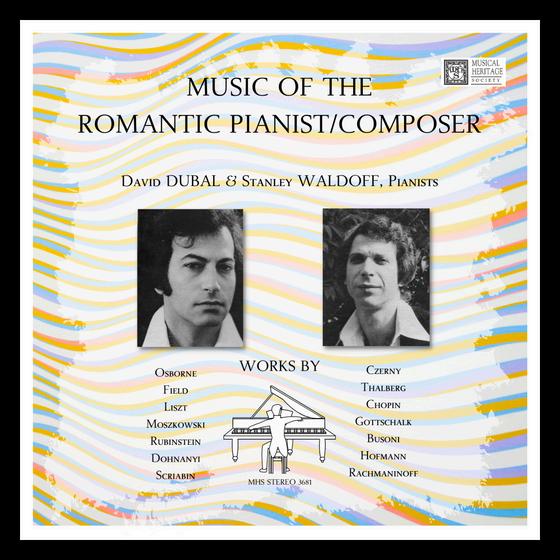


by David M. Greene
I suppose you entertain some lovely fantasy image of The Romantic Pianist Composer? Well, forget it! He never existed, except in old Cornell Wilde films Czerny was a stuffy bachelor who lived in a clutter of manuscript, dust, and cats John Field was a lush Josef Hofman was short and round and had little pudgy hands Rachmaninoff looked like a bereaved bloodhound Liszt had a wart on his cheek and played dressups in clerical robes. As for the deathless Majorcan romance, Mme. Dudevant, calling herself ''George Sand,'' swaggered about, attired in trousers and waistcoats and big black cigars, while Chopin--whom she called by such endearments as "Chipette" --trotted whimpering at her heels
Actually, of course, this record has little to do with romance in its amatory sense, though cultivation of the Higher Passions was certainly one characteristic of the Romantic Era Such cultivation was, no doubt, watered and fertilized by the symbolic evocation of such emotions in the arts of the day; in music this took the form of ecstatic heaving, maniacal jubilation, lachrymose gurgling, and the like Another characteristic of the Romantic Era that is even more apropos here was the proclivity of the artist to write advertisements from himself, so to speak, to cultivate the mystique of his genius and the myth of his Olympian uniqueness In the end one might venture to guess that it was this kind of pose that turned a large part of the public away from the fine arts. Certainly the flamboyance of such men as Liszt, Wagner, Whistler, and Oscar Wilde did not sit well with everyone And if there were numbers of serious, sober, dedicated pianistcomposers, they too were lent a false coloration by the medicineshow approach of press-agentry The spectrum of ''Romantic'' composers embraced by the Messrs Dubai and Waldoff is a broad one, extending from Field (b. 1782) to Dohnanyi, who lived to make stereo recordings But doubtless they all, early or late, shared something of the Romantic impulse And if the backlash against Romanticism and the nineteenth century was a result of the phoniness and hypocrisy of the age, they are all dust now, their personal foibles forgotten, enabling us to hear their music unencumbered by personal irrelevancies
To a considerable degree, this is a program of what were once "old favorites" --the Chopin "Minute Waltz," the Moszkowski Valse Brillante, the Rubinstein Romance, the Liszt Etude Because I hark back to the era when they were thus regarded, it's hard for me to guess where comment is needed, so I shall be arbitrary. The Czerny piece is from ''The School of Finger Dexterity,” recently recorded in its formidable entirety by Vivien Harvey Slater Sigismond Thalberg (whose name--Valemount-suggests that he had his ups and downs) was supposedly Liszt's greatest rival, and their famous pianistic duel at the Princess Belgioso's seems to have been declared a draw; I don't recall seeing his variations on "Le Depart" on records before Busoni, like Puccini, wrote an opera on Carlo Gozzi's play Turandot, after writing incidental music for that work From this last he arranged his fourth elegy, ''Turandot's women's boudoir," based on "Greensleeves," of all things! Godowsky's "Old Vienna" is perhaps his most popular piece; it derives from a collection of thirty pieces in three-four time called "Triakontameron" Surprisingly, Josef Hofman, represented here by a "Nocturne,'' wrote a good deal of music, including a symphony and five piano concertos I have no information on Charles Osborne, famous but obscure author of "The Rain of Pearls " Dohnanyi once recorded his rhapsodies for Remington, purveyor of the original cheapie




BEETHOVEN: THE 10 SONATAS FOR VIOLIN & PIANO
Stephen HOUGH, piano
Robert MANN, violin


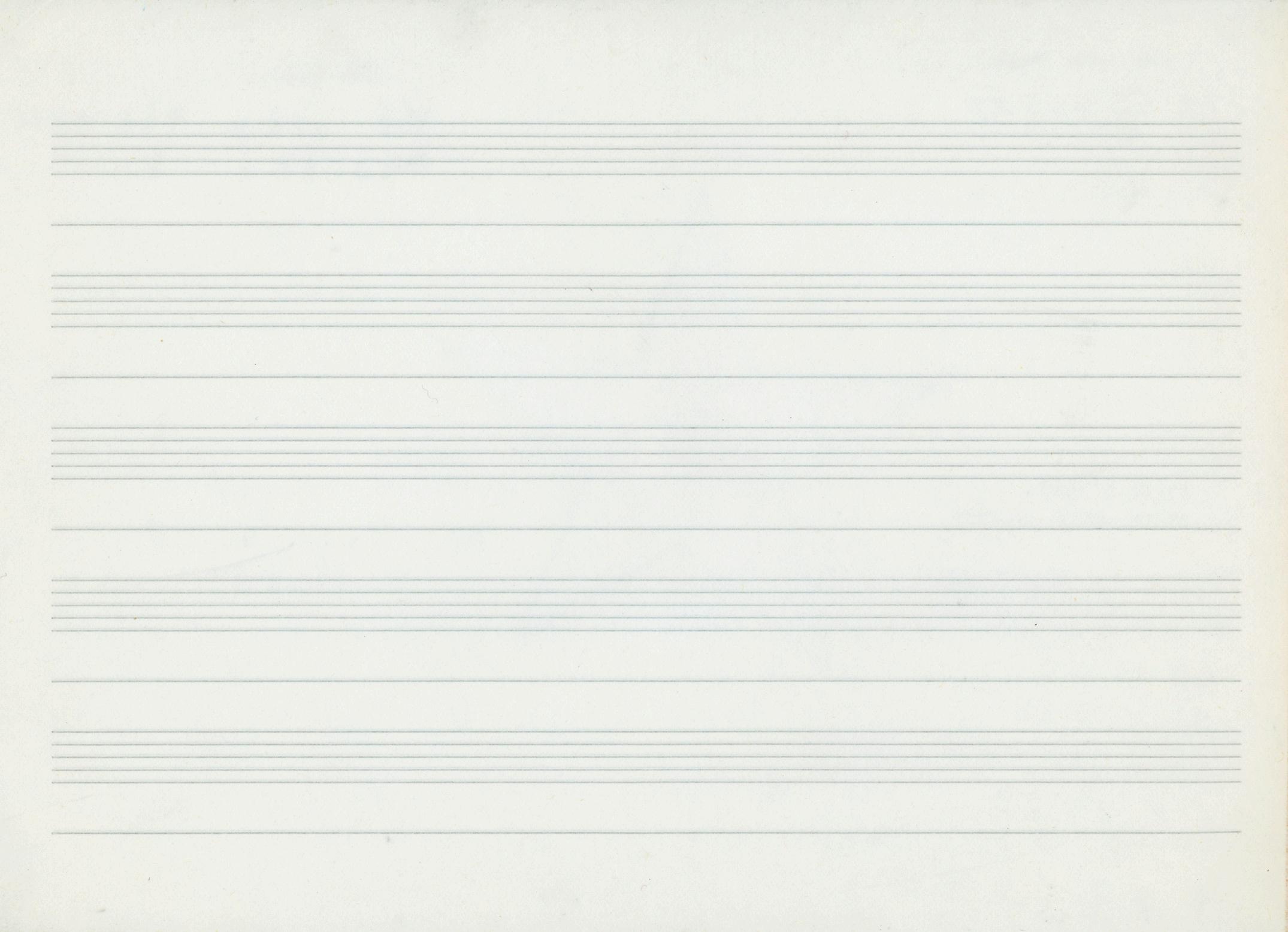
INDIVIDUAL VOLUMES AVAILABLE FOR DOWNLOAD


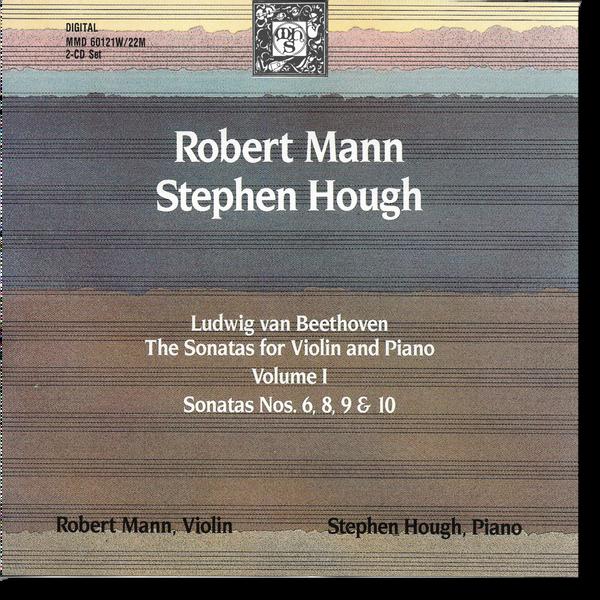
VOLUME 1: SONATAS 6, 8, 9 & 10
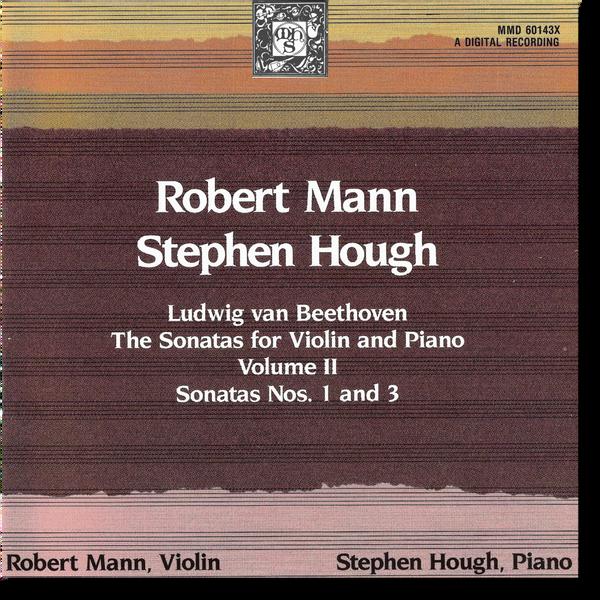
VOLUME II: SONATAS 1 & 3

VOLUME III: SONATAS 2, 4, 5 & 7

David White
Mussorgsky is the most arranged composer, at least the most arranged as if there were something wrong with his works in the first place.
Tchaikovsky wrote of poor Modest to his patroness:
Mussorgsky you very rightly call a hopeless case. In talent he is perhaps superior to all the [other members of The Five], but his nature is narrow-minded, devoid of any urge towards self-perfection, blindly believing in the ridiculous theories of his circle and in his own genius. In addition, he has a certain base side to his nature which likes coarseness, uncouthness, roughness. He flaunts his illiteracy, takes pride in his ignorance, mucks along anyhow, blindly believing in the infallibility of his genius. Yet he has flashes of talent which are, moreover, not devoid of originality. Woof! Tough crowd!
Yet of late it’s become fashionable again to perform his works as he wrote them.
But not today - at least not in this reissue of a 1970s era Musical Heritage recording which we’ve unearthed for the Halloween season (or for anyone interested in a wild, scenery chewing vaudeville version of Pictures at An Exhbition).
Calvin Hampton MIGHT be known to our members who spent a bit of time at MHS and in New York City, where Mr. Hampton would put on weekly concerts at midnight on Fridays, and he had works premiered by the New York Philharmonic. In the case of this recording, if you expect a recording of Bach’s works for organ, you can hear that these arrangements are influenced by Bach’s great Toccata in D, not as it appears on a great orchestral stage, but as it appears in Vincent Price movies! Calvin lets it fly - and this is fun, fun, fun and also spooky, just in time for Halloween!





MODESTE MUSSORGSKY
PICTURES AT AN EXHIBITION
(ARRANGED FOR ORGAN)
CALVIN HAMPTON, organ


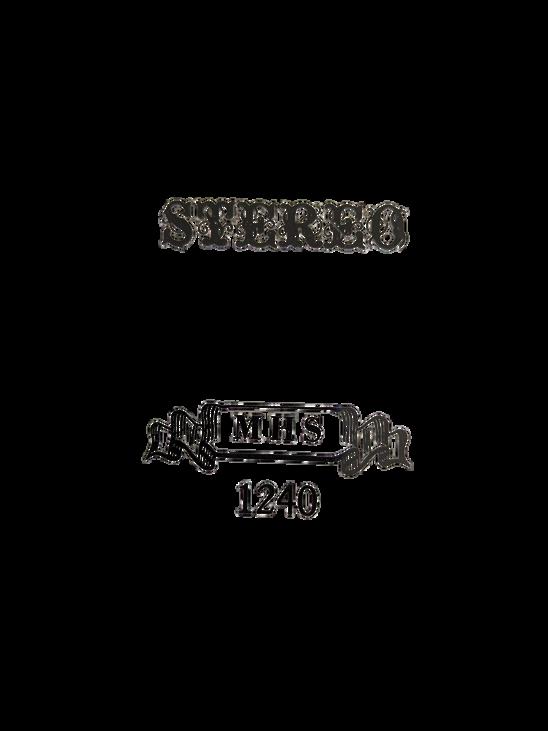
SPOOKY and fun...
Ever thought of Mussorgky’s Pictures at An Exhbition as a Halloween classic?
Calvin Hampton’s original arrangements lean heavily into the otherworldly... perfect for midnight listening.


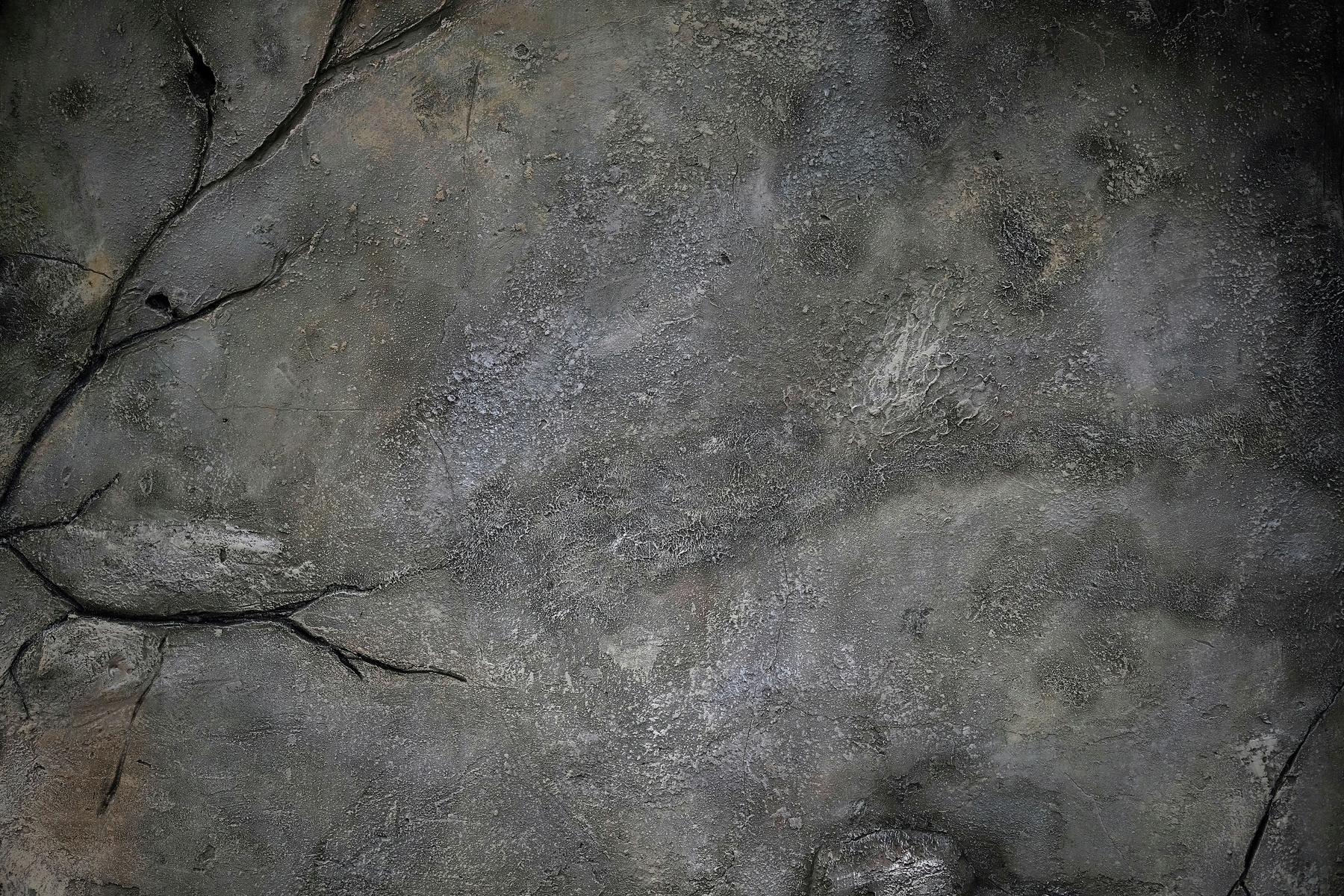


I chose that title because it sounds like the title of a film by Sergio Leone, where an outsider comes in and rattles the establishment and leaves a few bodies in his wake
I’m not entirely certain that Maurice Ravel would shoot a few guys in the bar because they looked at him the wrong way, but he did shake things up He’s more Jimmy Stewart than Clint Eastwood, but he WAS referred to as a “hooligan” and an “outlaw” (perhaps with some irony added for spice).
Maurice Ravel would be a modern man in almost any age He combined a series of social elements and intellectual curiosity and became a man made to bridge music from the 19th into the 20th century - or from any time into another time. His father was a gadget lover, a technological “do-er” and his mother, of Spanish origin instilled in him a love of Spanish music
As a student he was rejected by the conservatory’s established staff, lost interest in becoming a pianist, and began to think of himself as a composer
The love of modernity from his father, and the establishment of music from his mother, created one of the first composers with a truly 20th century approach to music (even if he started to write before the 20th centruy started)
Ravel’s music might be criticized for lacking
the grand gesture, the Beethovenian sweep, or even a Debussy-esque orchestral flair, but we’ll remind the readers that he composed the most popular orchestral work of the 20th century
For the piano works here, you sense the influence of his father - and the Ravel that Stravinsky called “a watchmaker of genius” (not an insult and not a compliment).
In each work, he draws his inspiration from a person and uses their influence to guide his compositional energy. Miroirs is dedicated to a member of “Les Apaches” - a group of young artists in Paris. This work, in five movements, is quiet and intense (The thirda movement, Albarado del gracioso, became later orchestrated by Ravel and achieve a far greater popularity).
Le Tombeau de Couperin, one of Ravel’s best known works is a direct homage to the Baroque suites for orchestra and harpsichord
And Valses Sentimentale et Noble is a direct dedication to Franz Schubert, without, again any direct musical connection - that is, you won’t hear a Schubert sound But what Ravel wanted to capture was the same spiritual sensibility that Schubert gave his own noble and sentimental waltzes.


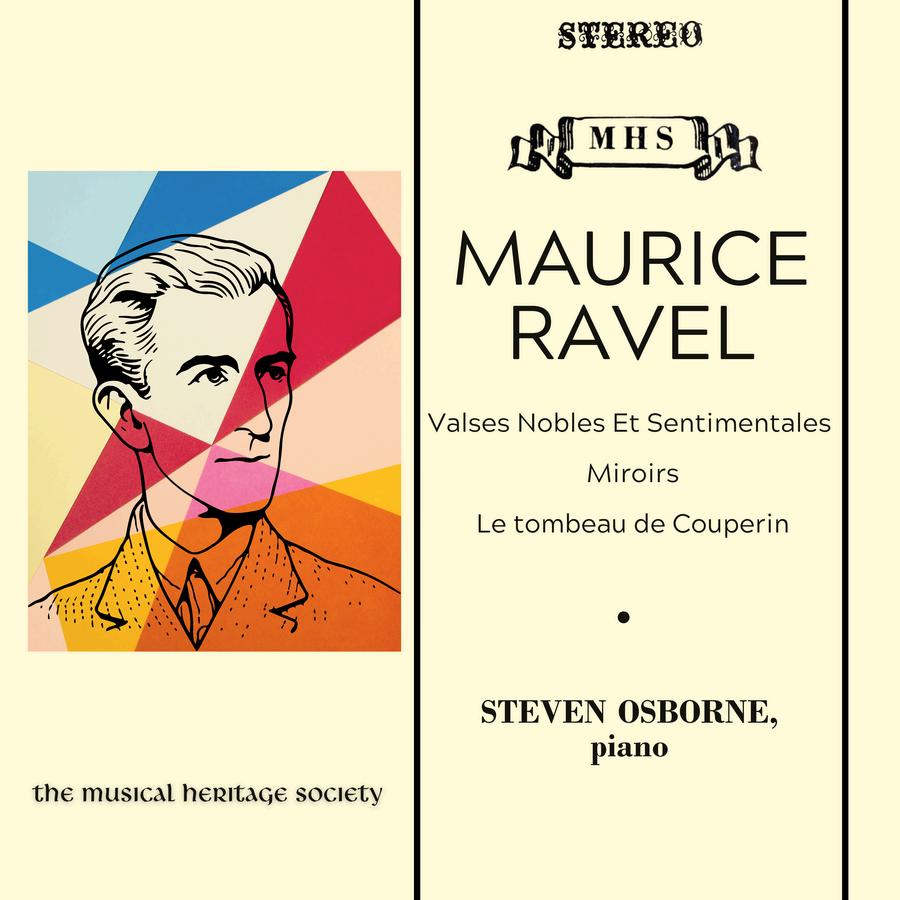
MAURICE RAVEL
Valses Nobles Et Sentimentales
Miroirs
Le tombeau de Couperin
Steven OSBORNE, piano


Steven Osborne, like the musicians featured in our Classical Stars collection, also won a Naumberg Foundation award, following Stephen Hough by two years. His Naumberg Foundation recording is this recording - an all-Ravel recording.
Osborne has gone on to success - although he’s rarely seen in concert in the United States - he has recorded extensively for the Hyperion label, creating a career based on precision and beauty.
Rarely heard for decades, the Ravel recording is now available for download from MHS.






I have read, with some amusement, the Papierkrieg over the "Vivaldi glut" in the Letters column of this organ (well, harmonium at least) Is it just me (as resident exsanguine turnip), or isn't there also a Telemann glut? Considering that he holds the Guinness record for musical prolificity, there's certain grave danger of one.
As with Vivaldi, it was not always so, and many a man is now alive who can remember when Telemann records were harder to come by than the sunken treasures of the Titanic The second edition of The Gramophone Encyclopedia of Recorded Music (1942), for example, lists the A minor Suite, two quartets, a trio sonata, two movements from the Tafelmusik, three songs, six keyboard fantasias, a single fantasia, and an unidentified aria Schwann now lists several columns of LPs and CDs, any one of which probably contains as much music as what I have cataloged above
I believe that there is an inherent danger in extraordinary artistic fertility: it makes one suspect of glibness and lack of seriousness of intent Though his contemporaries considered Telemann up there with the best of them, later generations taxed him with just such sins Just for the heck of it, I attempted a very unscientific rundown on how long such attitudes lasted. I began with two older histories, one general (Lang) and one of the period (Bukofzer). Neither gave Telemann much individual attention, being content to cite him as an also-ran with those typical of his time.
Deems Taylor's updating of The Music Lover's Encyclopedia (1939) accords Telemann eight lines which call him "prolific and facile " (Bach gets threeand-a-half pages plus a family tree; Handel gets threeand-a-half columns ) The American History and Encyclopedia of Music (1908), however, gets down to business Acknowledging Telemann's technical knowledge, it continues " but his works are lacking in depth and grandeur, and his church pieces particularly seem shallow He had a bad influence on the church music of his day He seems to have been affected by Italian composition, then decadent
His writings are lacking in depth and originality " This view was echoed and embroidered as recently as 1954 by Grove V: "With all of his undoubted ability, he originated nothing, but was content to follow the tracks laid down by the old contrapuntal school of organists, whose ideas and forms he adopted without change." His fertility, contrapuntal skill, and technical mastery "were neutralized by his lack of any earnest Ideal and by a fatal facility naturally inclined to superficiality... The shallowness of the church music of the latter half of the l8th century Is distinctly traceable to Telemann's influence "
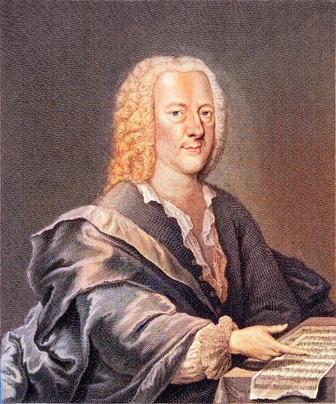

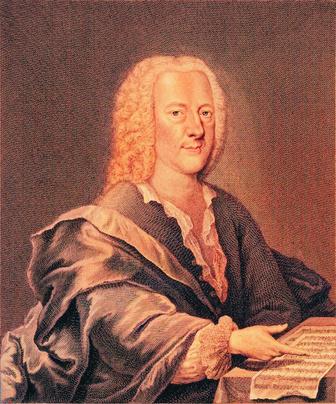
But, taking a forward leap of only 30 years to the Britannica, we find Telemann enshrined In Its "Macropedia" (reserved for the most important entries) Here we are told that, thanks largely to Max Schneider and Romain Rolland, the official view of the composer has been upgraded, and we are given such judgments as this: "He composed equally well for the church as for opera and concerts. His music was natural in melody, bold in harmonies, buoyant in rhythm, and beautifully instrumentated. Profound or witty, serious or light, It never lacked quality or variety "
And In his too-brief notes to this album, Richard Taruskln sums up Telemann's galanterie, that "quality of civility and wit, grace and everyday congeniality that was worlds away from the passionate heroics of the baroque Telemann wore his learning lightly, occasionally affected a pleasing melancholy but never (at least in a chamber piece) went after deep pathos, would count himself successful if his hearers smiled and said 'How pretty ' "


GEORG PHILIPPE TELEMANN
ESSERCIZI MUSIC (COMPLETE)
THE AULOS ENSEMBLE
Anne Briggs, flute
Marc Schachman, oboe
Linda Quan, violin
Richard Taruskin, viola da gamba
Myron Lutzke, cello
Charles Sherman, harpsichord
Michel Piguet, recorder


A friend of Bach and Handel, Telemann was a musician, a poet, a theorist, as well as a mathematician, and a botanist!
His Essercizii Musici was composed, in his words, as “a musical diversion, consisting of 12 solo and 12 trio sonatas...”
The Aulos Ensemble recordined these works in the 1980s, among the first ensembles in the world to record the entire set using period instruments.
The very essence of galant music, this album is presented in its entirety for the first time at MHS.





America’s finest original instrument ensemble America’s finest original instrument ensemble America’s finest original instrument ensemble
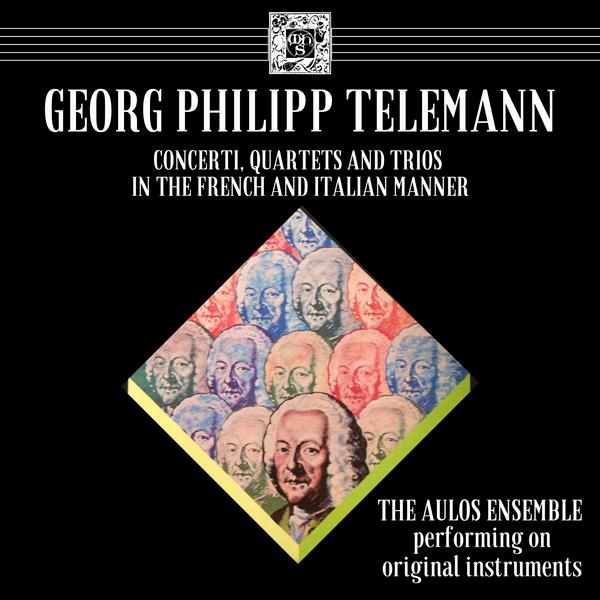
MORE TELEMANN BY THE AULOS ENSEMBLENOW AVAILABLE FOR DOWNLOAD AT MHS!
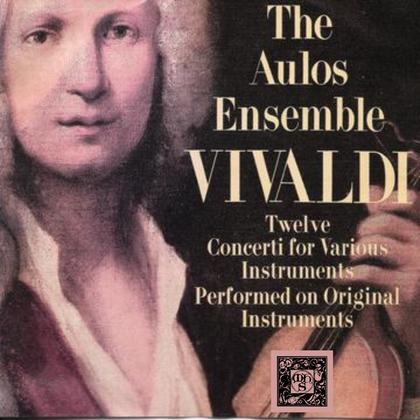
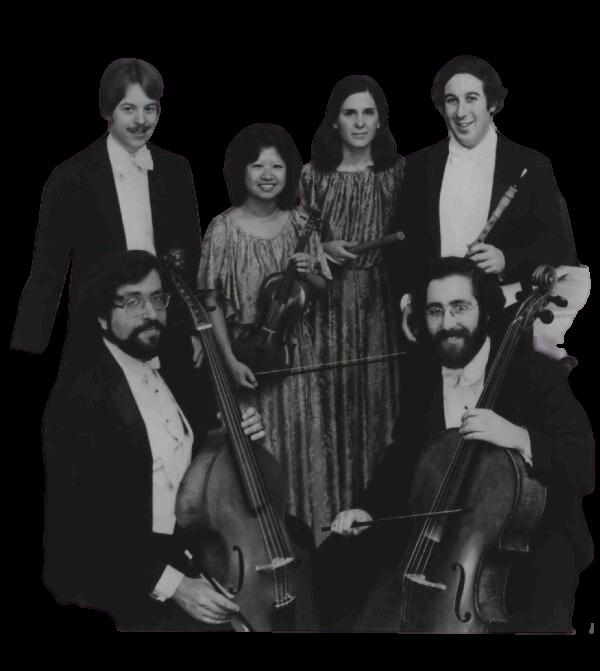

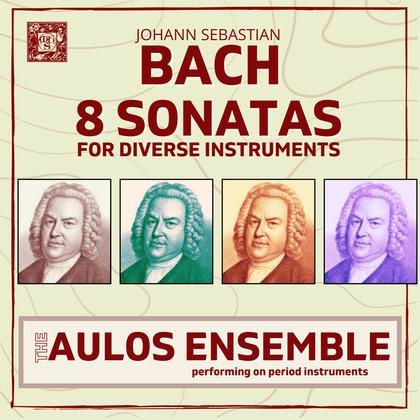

available as a set or in three separate boxes
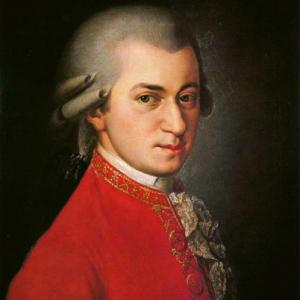



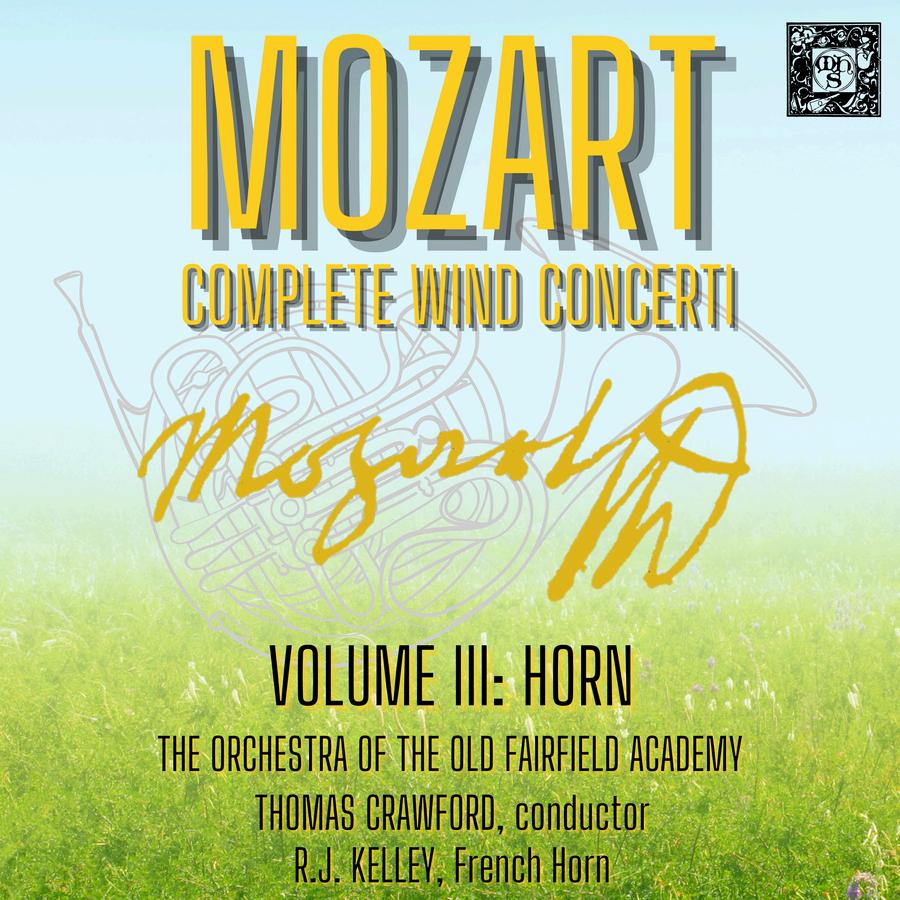

by David M. Greene
irving Berlin, the son of a cantor, first saw the light in Russia, as Israel Balin or Baline, depending on how one transliterates All the references give his birthplace as Temun, but I find nothing that hints at its actual location (Added note: Aha! It's in Siberia!) Perhaps it was wiped out in the pogrom that drove the Balins to America in 1893 Life in New York's ghetto was as hard for the Balins as for most immigrants, and young Izzy's education, musical and otherwise, was minimal At eight he was on the streets helping support his family. Some books say he sold newspapers, others that he guided a blind singer At any rate, he became a singing waiter in a Chinatown cafe, and in 1907 he collaborated, as lyricist, with "Nick" Nicholson, his pianist, on a song, "Marie from Sunny Italy " It was published, and, the printer having got things screwed up, the lyricist appeared as "Irving Berlin "
The newly named Berlin went on to write more lyrics, then to supply his own tunes, and to sing his songs in vaudeville and in revues In 1911 he suddenly had a worldwide hit with "Alexander's Ragtime Band" and found himself rich and famous At that time he announced that his ambition was to write a ragtime opera He had no musical training, played by ear, and could neither read nor write music (He acquired a transposing piano which took him into other keys than the F-sharp major that was his normal limit ) He probably had only a general notion of what an opera was Real ragtime was just reaching the east coast, and the Original Dizieland Jazz Band's records were five years down the road, but the attraction of Berlin's syncopations surely heralded a new age
"Alexander's Ragtime Band" was hardly typical of Berlin In his invaluable American Popular Song (1912), the late Alec Wilder says he prefers "Alexander's Bagpipe Band," which Berlin published the next year But his next hit (also 1912) was a ballad called "When I lost you," written after the death of his young wife Later several others, including the popular "All Alone," traced his courtship of Ellin Mackay, daughter of the millionaire head of Postal Telegraph, who violently opposed (unsuccessfully) her marriage to a Jew In fact Berlin wrote all kinds of songs One acquaintance swore that at his peak he made it a point to turn out at least one a day--some of them, by Berlin's own admission, pretty bad
He came to Broadway via a song included in the 1910 Ziegfeld Follies, and saw his own first show, Watch Your Step, mounted in 1914. Of his early efforts perhaps the one best remembered is Yip, Yip, Yaphank, a wartime revue played by soldiers, in which Berlin himself sang "Oh, how I hate to get up in the morning " In 1929 he joined forces with the Marx Brothers in The Cocoanuts, which led him to Hollywood, and some memorable films (e g Top Hat, Holiday Inn) Of his late musicals Annie Get Your Gun would alone have assured his immortality. His final show was Mr President in 1962 The last song I find listed is "An Old-Fashioned Waltz" (1966) Berlin could have bought and sold most of us on "White Christmas" alone
Multifaceted Dick Hyman is, as one hears him here, no mere cocktail pianist He is to such songs what Liszt was to Gypsy tunes These are brilliant fantasies, played with a crystalline technique. They are meant to be listened to, not to serve as babble-background But, for all their glitter, they never lose sight of Berlin's tunes or the spirit in which they were conceived




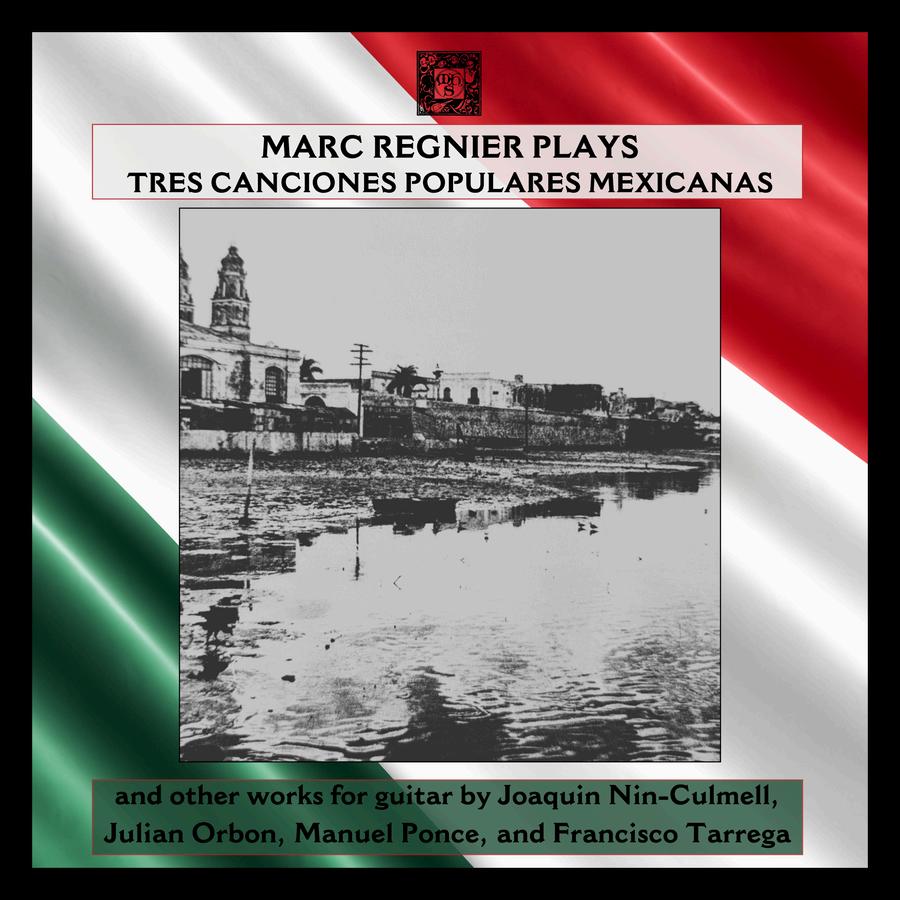
MANUEL PONCE: Twenty-Four Preludes
8 Prelude in F-Sharp Minor (formerly Six Preludes, No 1) 01:26
7 Prelude in A Major (formerly Six Preludes, No 2) 00:50
13. Prelude in F-Sharp Major (formerly Six Preludes, No. 3) 01:28
11 Prelude in B Major (formerly Six Preludes, No 4) 00:47
16 Prelude in B Minor (formerly Six Preludes, No 5) 00:45
24. Prelude in D Minor (formerly Six Preludes, No. 6) 01:40
MANUEL PONCE: Tres canciones populares mexicanas
I La pajarera 01:13
II Por ti mi corazón 03:19
III La valentina 01:53
MANUEL PONCE: Sonatina meridional
I Campo 04:24
III Fiesta 02:29
II Copla 02:13
MANUEL PONCE: Preludio 02:09
MANUEL PONCE: Scherzino Mexicano 03:09
JULIAN ORBAN: Preludio y danza 03:52
FRANCISCO TARREGA: Estudio brilliante 02:02
FRANCISCO TARREGA: Mazurka in G Major 03:07
FRANCISCO TARREGA: Marieta (Mazurka) 02:17
FRANCISCO TARREGA: Prelude No 5 01:55
JOAQUIN NIN-CULMELL: Six Variations on a Theme by Milán 06:30
“Guitarist Marc Regnier, his two capable hands firmly but gently on the nerve centers of this music, takes us on a rewarding voyage of discovery.”
As music lovers, we Americans are, in many ways, a provincial lot To most of us, the vast and variegated musical landscape just south of our own border is largely uncharted territory Despite the enormous impact of the long-running Broadway musical Evita--which did so much to conjure up those wonderfully nostalgic days of Juan Peron and his ruthless but charming wife (who to me still bears an uncanny resemblance to Patty LuPone, all historical evidence to the contrary)--we know very little about this vast region spanning, north to south, some 6250 statute miles, and containing well over 389,655,000 persons in an interesting mix of indigenous, Hispanic, Portuguese, and Black cultures.
Who out there can name a composer from this region besides (guitar aficionados need not participate) Carlos Chavez or Heitor Villa-Lobos? Incidentally, on the very day of this writing I've acquired a recording of orchestral music by the Mexican composer Silvestre Revueltas (1899-1940), and like the guitar music on this release, it's smashing stuff Now I can name a third composer
he largest portion of this recording is dedicated to the Mexican composer Manuel Ponce (1882-1949). Initially trained in Mexico, Ponce embarked upon a European sojourn in 1904 to further his studies at Berlin's Stem Conservatory (the same institution


which produced Bruno Walter) Along the way he befriended Paul Dukas and assimilated the sounds of the French Impressionists Returning to Mexico, he established credentials as a folklorist, teacher, and conductor, but, most important, also as a composer striving to create a synthesis of popular elements and "learned" technique His guitar music--all composed late in his career during the course of a unique collaborative friendship with Andres Segovia--provides a delightfully satisfying means to judge his success
His Preludes 1-6 are musical minimalism in the best sense. In these epigrammatic essays (each averaging around a minute in length) all elements are pared down almost to the vanishing point The slightest melodic twist, harmonic change, or variation in timbre has enormous impact; guitarist Marc Regnier negotiates each subtle move with stunning effect In best baroque tradition, each movement is based on a ground-bass figure presented at the onset of the first prelude. What emerges is a sort of "Enigma Variatons" set, with the theme proper appearing only in the very last piece This "theme" shows itself to have been, all along, a tune of a decidedly popular nature Of the remaining four Ponce pieces, I defy anyone to tell me (without reading the liner notes) where the transcription process ends and the composing begins.
Two of the other composers on this release, Joaquin Nin-Culmell (b 1908), an American of Cuban descent, and the Spanish-born Cuban Julian Orbon (b 1925), offer us pieces squarely in the Ponce tradition, only with more updated harmonies, and in the case of Orbon, bracing Afro-Cuban rhythms.
Without the Spanish-born Francisco Tarrega (1852-1909), this release probably wouldn't have been possible When Tarrega took up the study of the guitar in 1862, the instrument was at its nadir The developing piano, with its overall loudness and its ever increasing dynamic range, was rendering the modest guitar obsolete Taking the sage advice of his father, Tarrega became a virtuoso pianist as well as guitarist The turning point came in 1869 when young Tarrega acquired a loud, resonant guitar from the luthier Antonio Torres With this instrument in tow, he established himself all over Europe as the "Sarasate of the Guitar " He overcame his lack of repertoire by transcribing established composers, including Mozart and Beethoven, as well as by composing original pieces The four compositions on this record evoke the world of Chopin, but in their subtle turns of melody and rhythmic inflections (especially in the two mazurkas) they transform archetypical Polish music into archetypical Spanish music Through his composition, Tarrega says more about the universality of music than I could possibly with my words.
Guitarist Marc Regnier, his two capable hands firmly but gently on the nerve centers of this music, takes us on a rewarding voyage of discovery
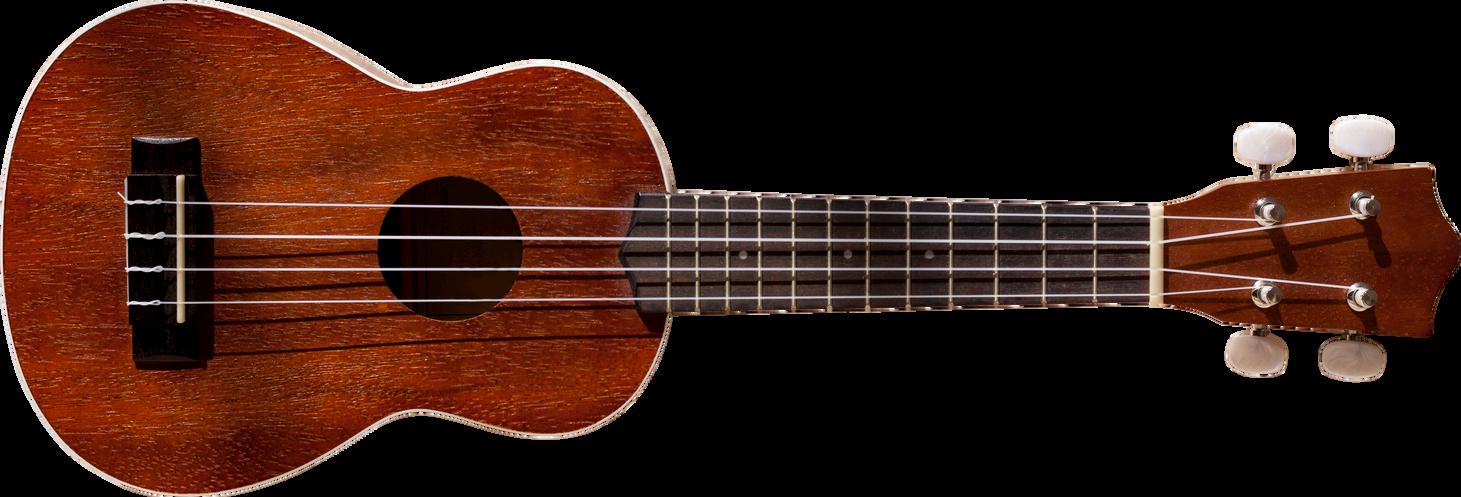







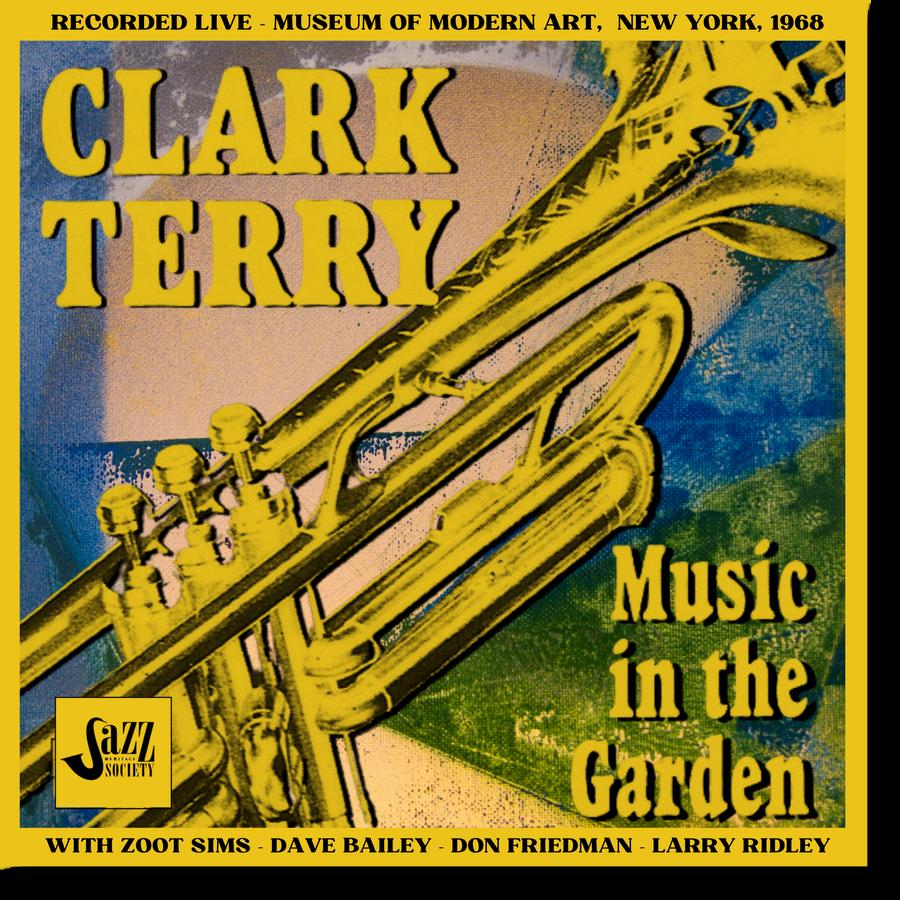
Live at the Museum of Modern Art, 1968
Bass–LarryRidley Drums–DaveBailey Flugelhorn–ClarkTerry Piano–DonFriedman
TenorSaxophone–ZootSims Trumpet–ClarkTerry

On this particular evening in the Garden, in what Bailey and bassist Larry Ridley describe as "a lovely setting," Clark's primary foil was the tenor saxophonist Zoot Sims A most memorable artist, Zoot brought a bubbling sense of life and his own particularbrandofswingtothemusic
"I was very glad to team with Zoot," Clark asserts "We did a lot of things together over the years -had a mutual admiration thing going I sure loved thewayheplayed"
The title of this LP gets its name from the location of the concert, which took place in the garden of New York's Museum of Modern Art. Clark Terry put together a pickup group for this August 1968 performance, and with musicians of the caliber of Zoot Sims, Don Friedman, Larry Ridley, and Dave Bailey; things came together very nicely The spirited opener, "Now's the Time," has some great unison playing by Terry and Sims...Terry's vocal-like muted trumpet is the focus of "I Got It Bad (And That Ain't Good)," while his effective gimmick of alternating between a muted trumpet in one hand and a flügelhorn in the other is the centerpiece of "In a Mellotone," backed by Ridley's tasty bassline Terry's impromptu blues "One Two Blues, You Know What to Do" features his hilarious scat vocals, and they sign off with a quick chorus of "Take the 'A' Train." -Ken Dryden, AllMusic Guide



Now class, as we explored in our essay for Classical Stars, we discussed the importance or the lack of importance in having a “star” performer appearing on a recording
Those of you who voted for “I’m not sure” will receive extra credit. Those who buy only when a star appears, you’ll be staying after class and writing “I Will Use My Ears” on the board 100 times
So here we are with the exact definition of the possible “worst case scenario”. The great musician Benny Goodman established for a generation that he was a musician and performer without peer.
But for a man of his generation, there was an irresistible call to the concert stage. After all, he had transformed Carnegie Hall into a jazz venue for a night - a seminal moment in American music
So he made a recording of Mozart with the Budapest String Quartet (which he hated) In his lifetime he commissioned works by Bartok, Milhaud, Copland, Britten, Hindemith, Malcolm Arnold and Poulenc.
So his technical abilities were matched by an intellectual curiosity - although reviews of many of these concertos when they
were debuted asked that Goodman be allowed to improvise rather than stick to the paper - meaning they’d rather hear Benny play than Hindemith write...
But we don’t have the problem here, we have recordings from Benny Goodman’s private collection He reached out and hired a group of musicians for a few days of playing and recording, and these recordings are the result.
Goodman claims he walked out of the Budapest sessions in 1940 in utter shame, feeling completely unprepared. His clarinet had a jazz feel, not a classical approach
By the time he made these recordings., he had both come to believe in his abilities, and had acquired the skill to perform “concert music” in a concert music style
So what you have here is a fine clarinettist with a group of excellent professional musicians, performing chamber music for the clarinet. Goodman is a star, as we said before, and yet there might be clarinettists who can more smoothly transition, but these performances are heartfelt and highly enjoyable.




Johannes Brahms (1833-1897)
Trio in A Minor for Clarinet, Cello and Piano, Op. 114
Quintet in B Minor for Clarinet and String Quartet, Op. 115
Ludwig van Beethoven (1770-1827)
Trio in B-flat Major for Piano, Clarinet and Cello, Op. 11
Carl Maria Von Weber (1786-1826)
Clarinet Quintet in B-flat Major, Op. 34



BennyGoodman,Clarinet
BerkshireStringQuartet
UricoRossi,AlbertLazan,Violins DavidDawson,Viola FritzMagg,Cello
LeonPommers,Piano
Theseprivaterecordings, releasedexclusivelythrough theMusicalHeritageSocietyarenow availabletomembers.
Goodmanmadetheserecordingsmany decadesafterhisgroundbreakingMozart recordingwiththeBudapestString Quartet



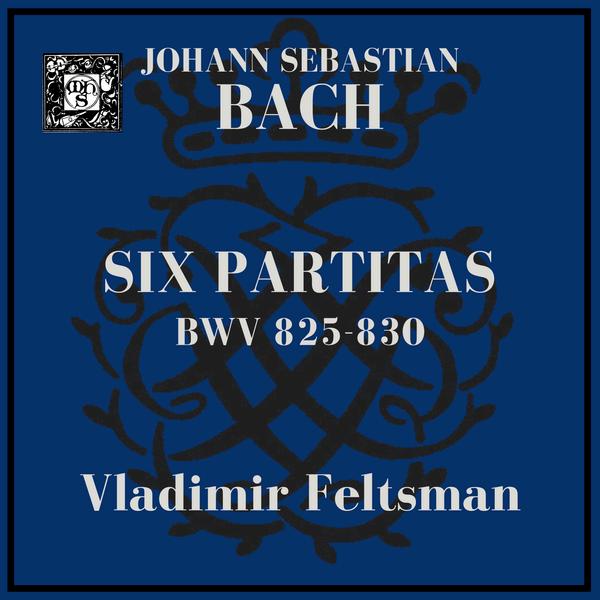
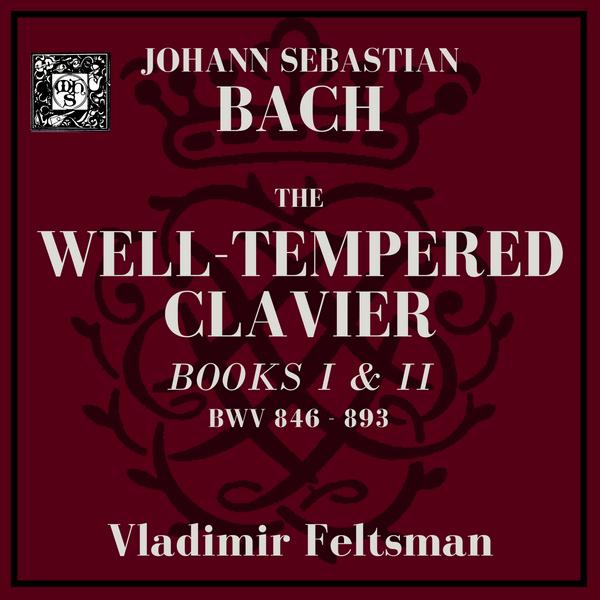
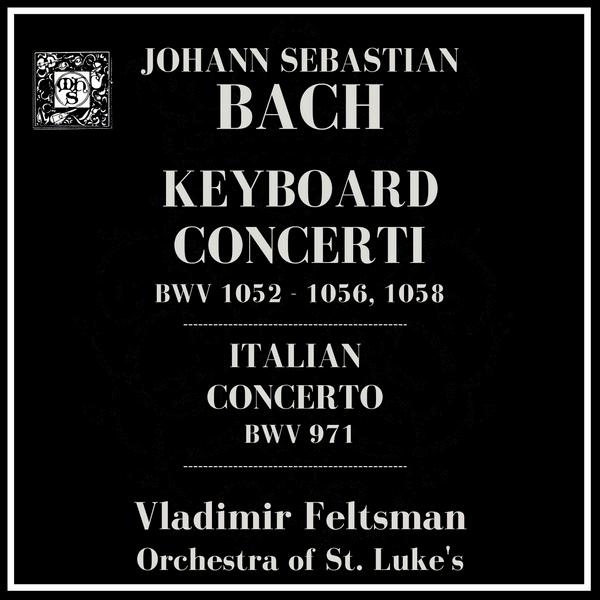

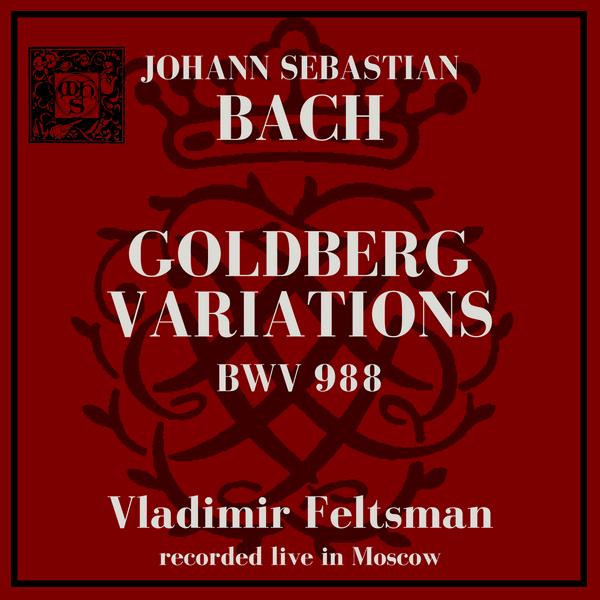
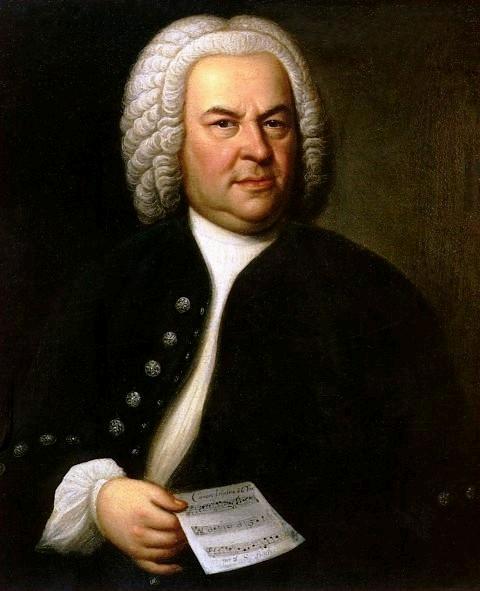





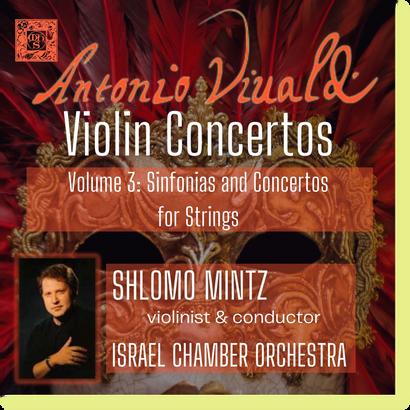
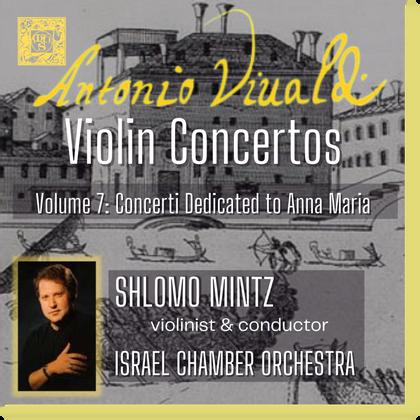






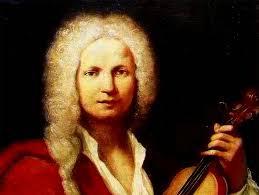
My first impressions in restoring this collection was that I had somehow been locked in the lobby of a Medieval Times amusement park, and I had no way out
Quite fortunately for me, this was a temporary issue - in fact, it lasted only about 3 minutes, because the first track on the recording only lasts about 3 minutes
There’s nothing wrong with the first track, but if you think you might be allergic to music that makes people dance like they are in a Shakespeare play - as if ANYONE knows what it’s like to dance in “Twelfth Night”. (Let’s face it, we’re all just guessing, it’s just that some guesses, like some dancers are just MUCH better than others.)
While it might not entirely be digestible in one setting - with 73 tracks it certainly would be like eating an entire box of cookies - but it was originally split over 3 LPs, with approximately 25 tracks on each LP, that gives you about 35-40 minutes of a diverse collection of music written in England for the dance, during the Renaissance and Baroque periods
Stevens assembled the best of England’s “early music” performers for this collection and his very clever idea is to vary up the music, so you very much DO NOT feel like you are trapped at a bad Renaissance faire. The Canzona Ensemble takes the moments driven by the wind instruments like the flutes and bagpipes, Harold Lester performs harpsichord interludes which remind us of his considerable talent, The Jaye Consort brings us delightful string-driven interludes, including a wild hurdy-gurdy solo and even a bagpipe moment (not strings, but I guess someone had to add a bagpipe)
But ZOUNDS! be not worried, fair listenerfor this collection features not only the joyous sounds of the peasants making merry around the May Pole! This collection is actually a superlative and well executed concert, conceived by the indefatigable Denis Stevens.
So there’s not just the swirling flute and the drumming. Stevens has concocted what he calls “An Entertainment”.
And an entertainment it is
The Philip Jones Brass Ensemble adds generally pithy commentary - their tracks are short and will leave you wanting a bit more. And the Accademia Monteverdiana appears as a large string orchestra and in trio form.
Highly, highly recommended to all!




PHILIP JONES BRASS ENSEMBLE
THE JAYE CONSORT
THE CANZONA ENSEMBLE
ACCADEMIA MONTEVERDIANA
STRING ORCHESTRA
Denis STEVENS, conductor


Yehudi Menuhin asked Denis Stevens to create an academic institution that would research and perform forgotten music of the baroque era - particularly music written by English composers.
This delightful collection - out of print for nearly 50 yearsfeatures the finest musicians in London performing music of Purcell, Locke, Byrd, Holborne and many others.
The recording features the Philip Jones Brass Ensemble, as well as harpsichordist Harold Lester and a fine group of musicians from the UK’s thriving “early music” cottage industry.



Carissimi - his name sounds vaguely like an Italian chocolate company, or maybe something slightly more racy - was one of the most influential composers of his time
He composed at a point where sacred music was becoming less important in the Italian music world, but owing to his formidable talent, he was able to make several forms within the sacred world a valuable means of musical expression
For example, he became to the oratorio what Haydn was to the string quartet and the symphony. Carissimi used the oratorio, always set to sacred texts, as a means of grand emotional statements. His drama probably influenced those who came later, and who quietly removed the overtly religious moments and replaced them with far more worldly emotions
However, Carissimi quietly threw in his lot with the Jesuits, who wanted the church’s music to be accessible and understood by the faithful So his compositional innovations actually sped along the secular music movement that would overtake music within 20 years of Carissimi’s death.
Georg Frederic Handel was perhaps the greatest composer to use the great compositional leaps that Carissimi made.
One of his finest works is the centerpiece of our newly revived recording “Judicum Extremum”

Carissimi’s talent as a composer was to take the texts and use recitative to move the dramatic action along

The other works presented here are mainly choral, so only “Judicum Extremum” offers a real clue to Carissimi’s complete impact as a composer in the 1600s








This long out of print recording features three of Carissimi’s oratorios, and perhaps his least exploreda quick look shows only one other recording of these works available. These oratorios are essentially choral works of approximately 12 to 20 minutes in length.




"Talent, it should be noted, can take many forms"
I feel that I must add my voice to those who have been decrying John Patton for his absurd statement that Bach, Vivaldi, and Handel are "routine, formulaic, uninspired." Obviously Mr. Patton is allowing his personal tastes to cloud his realization that these three men were geniuses of the first rank.
But after viewing the letters of Mr. Cowherd and Mr. Farnworth in release 383, I would caution them against falling into the same trap How can Mr Cowherd lecture to Mr Patton when in his letter he has referred to the "heavy-handed pap of Wagner" and the unrelieved saccharine bombast of Liszt and Tchaikovsky"? Can one listen to Tchaikovsky's beautiful Sleeping Beauty Liszt's inventive Annees de pelerinage (which contains some of his best compositions) and yet call them bombastic? Even if they are a bit pretentious, it is a pretention of the most glorious and thoroughly musical kind which I could wish some other composer had the will or the talent to emulate. And of all the things the music of' Wagner is, it is, my dear sir, most assuredly not "pap." We all have our personal tastes, but they should not interfere with our ability to recognize genius--or at least marvelous talent-when we hear it.
Talent, it should be noted, can take many forms. It does not always manifest itself in the manner that it did with Bach or Beethoven. For every momentous musical stride, there are many players--mostly forgotten by history--laying the groundwork, without whom the tremendous advances made by the great geniuses would be impossible. Mr. Farnworth, while Karlheinz Stockhausen was certainly not on a level with Bach or Vivaldi, he hardly deserves to be compared to Madonna. Stockhausen and several other composers of the Darmstadt group (notably Boulez) had great influence on and stimulated experiments on the part of composers everywhere. Stockhausen, in particular, helped the cause of electronic music with his Gesang der Junglinge.
I also take exception to the statement that "the ultimate test of any music's greatness is the test of' time " For example, Josquin des Prez--today almost singularly unknown outside of musicological circles--can be counted among the greatest composers of all time. His Missa de beata virgine is arguably the most magnificent vocal composition of the Renaissance, yet it is almost never performed. The question of whether certain music will be listened to by future generations depends not only upon the quality of the music itself, but upon the prevailing tastes of the era in question. Renaissance music is not as popular today as some other periods are; who is to say what periods will retain their popularity in 200 years? Heaven forbid. but perhaps Madonna will be viewed as the outstanding composer of the 20th century--it all depends upon the attitudes of the people living at that time.
On other matters, I was pleased to notice Gounod's Requiem in release 383, and I was wondering what plans the Society has to release recordings of other major vocal works such as Bach's St. Matthew Passion, Beethoven's Missa solemnis, or Josquin's Missa de beata virgine? I realize that you cannot cater to all tastes, but I would be thrilled with just a few such works every once in a while.
Jeffrey J. Tennessen


Seeing The Sorcerer’s Apprentice featured in release 363, I was reminded of an incident nearly half a century ago. In elementary school, music was part of our enrichment program. The Dukas selection was one of those studied by my fourth-grade class that year. The teacher said a similar class perhaps two years earlier had written Walt Disney to suggest animating this classic. With a look of triumph on her face she read aloud a recent newspaper clipping which reported that Disney was working on animations of several classical selections, including particularly The Sorcerer's Apprentice by Paul Dukas. The result, of course, was Fantasia. I don't believe anyone cared that Disney never acknowledged the suggestion. But members of a fourth-grade class in the 1930s probably have gone through life with a feeling of pride in knowing where the idea really originated.
William F. Welch Houston, TX
Will the real pianoforte please identify itself?
The terminology for this instrument (not pictured in the middle of p. 29 in Release 365) is something I have just spent some time trying to sort out. The instrument in the picture was, during Clementi's lifetime, the only piano there was. He and his colleagues called it "piano," "pianoforte," or "forte-piano" more or less interchangeably. In our day we call its descendent the "piano." But the instrument we play now is really no longer in the same genus as that one Clementi (and Mozart too) was writing for; they are two separate instruments. Thus they should have two separate names. We are pretty well stuck on using the term "piano" for the one manufactured today, and for perhaps the past 100 years. And we have been coming around lately to settling upon "fortepiano" as a name for the 18th-century version of this family (not "pianoforte"; sorry Signor Clementi). That seems to be a moderately adequate (if not very classy) way to distinguish between these two relatives. However, we may have a real problem on our hands if those advocates of the 19th-century (post-Beethoven) piano decide that their "missing-link" instruments deserve to be classified as a separate genus also, and thus require a name of their own. What's left? Maybe the solution suggested in the latest issue of Experimental Musical Instruments by Ivor Darreg would be best. He says his typewriter is very good at inventing names. How about pinao? or paino? Pinaofrote? the possibilities are legion.
Anita T. Sullivan, Corvallis, OR
There are always masterpieces, always examples of hackwork, always criminal acts Robert Maxwell Stern, in simplifying the history of film music (release 387), is being a little unfair to some great talents, and to some real jerks. Max Steiner and Erich Korngold created musical themes of intelligence which were seldom merely "slightly reminiscent of the classics"; neither were those of Herbert Stothart and Cyril Mockridge, who merely ripped others off (Chopin, Weber, etc.), and had someone else orchestrate their music at that. Steiner's "limping" theme in Of Human Bondage does not inhabit the same world as Stothart's unctious whining of "None but the Lonely Heart." Good as Herrmann is, he was able to snitch a bit of Ravel or imitate Stravinsky, so it's not true that pure creativity has taken over scoring. (How is the portrait theme in Vertigo different from "a dollop of mood a la Ravel"?)
In fact, I have written a lengthy piece on film music which I cannot publish. It shows that at least three highly regarded current film composers won their reputations with others' musicone, in fact, has "won" two Oscars by plagiarizing copyrighted works, so thoroughly that no possibility of doubt remains. No one has the courage to print this. Yes, film music is more profitable every year. No, it's not getting better--there are always masterpieces, always examples of hackwork, always criminal acts.
Richard Sebolt Springfield, MA


In seventeenth century musical Italy, amid the many splendid names of richly gifted artists, the personality of Giuseppe Tartini distinguishes itself by the peerless quality of this composer's heretofore relatively unknown output. Born in Pirano d'Istria in 1692, of a Florentine father in the service of the Venetian Republic, the boy Tartini was destined for the church, a vocation for which he showed little aptitude. Some years later the reluctant clergyman married and thereafter devoted himself assiduously to the study of the violin and musical theory Despite many travels with his wife to various Italian cities, Tartini managed to cultivate an enormous facility on his chosen instrument and even began to pen the first of those compositions which were to carry his name across Europe
As a composer Tartini held himself aloof from the activities of his contemporaries For example, he despised composing for the theater and preferred to cultivate his superb technique in the service of chamber and concerted works The bulk of his output is made up of concerti and violin sonatas, composed for his own edification and the edification of the Basilica de! Santo in Padova, where Tartini was employed. His music is marked by an austerity highly suitable for Italian chamber music of the period, in addition to an inherent restless quality and somber mysticism.
Tartini's method of playing and teaching attracted a large number of violin students which resulted in his opening an excellent violin school which was called "School of the Nations," and he himself was known as the "Master of the Nations " In a letter to Padre Martini he described the students' fees tuition at his school:
''His board (not in my house, as I do not care to take scholars in my home but in the house of my assistant), would be fifty paoli a month, because living is dearer in Padua than in Venice As for my own honorarium it will be two zecchini a month for solo violin alone; if he wishes counterpoint also, my fee will be three zecchini Some of my pupils pay me more, but I am accustomed to two zecchini for the violin alone If the youth is gifted, in one year, if God wills, his studies will be completed, as scholars with small talents have completed their studies in two years."
As a personality he was humble and easy going. As a violinist it was said of him that, "he didn't play, he sang on the violin " In 1789 Burney wrote of Tartini's violin sonatas that "many of his adagios want nothing but words to be excellent pathetic opera songs His allegros are sometimes difficult, but the passages fairly belong to the instrument for which they were composed, and were suggested by his consummate knowledge of the finger-board, and powers of the bow ''
Tartini modeled his works consciously on the Sonatas da Chiesa Op 5 and 6 of Arcangelo Corelli Corellian features abound in the Tartini chamber works recorded here, in their Concerto Grosso structures, their profound expressivity, and florid Baroque embellishments Virtuosity in Tartini--to be expected from this highly gifted instrumental virtuoso-always gives way to structural integrity, a cultivation of the "natural" in musical art. Other particularly Tartinian features include a spontaneous melodicism, ingenuity in the use of instrumental techniques, and a generous and flexible contrapuntal technique.
The 130-odd concerti for violin and orchestra constitute Tartini's most important work They represent a gold mine for those scholars and music lovers interested in exploring a shamefully neglected area of musical history It is highly difficult to establish a consistent chronology among these works as Tartini rarely dated his compositions and the manuscripts themselves are scattered all over Italy The great musicologist Minos Dounias has attempted, on purely stylistic grounds, to establish a workable catalog of Tartini's output and the performers on this recording have followed his lead

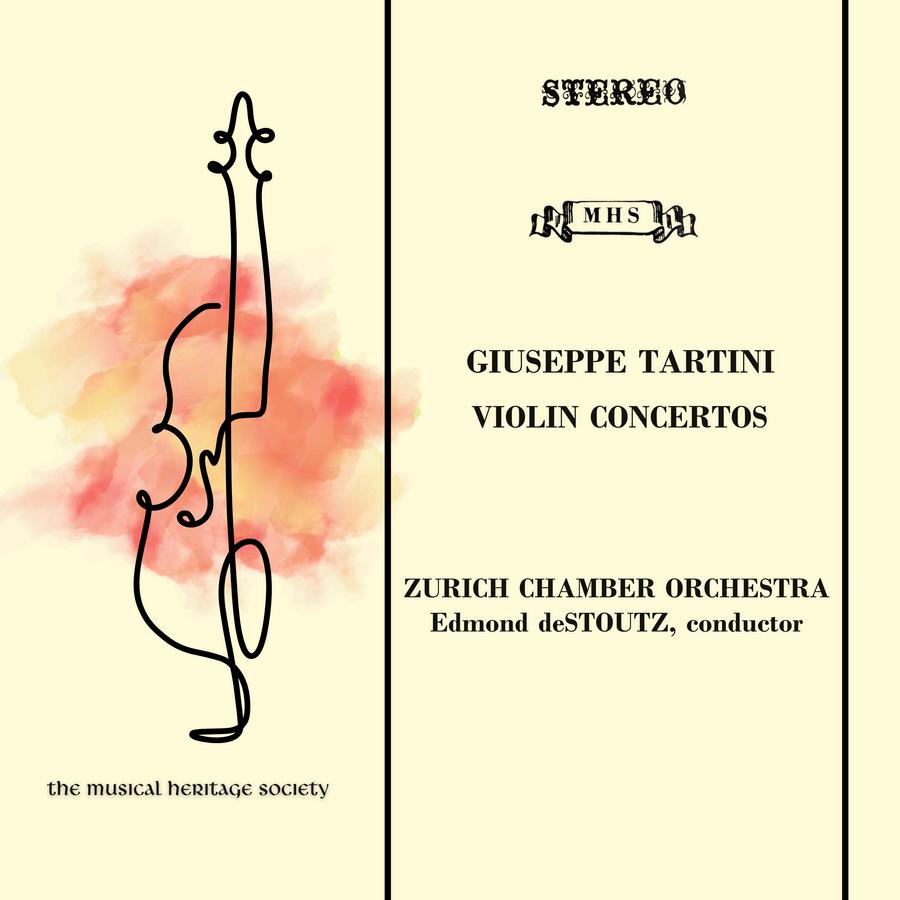

Four violin concertos by Giuseppe Tartini.
As mentioned in David Greene’s essay, Tartini’s way of making a violin “sing” instead of simply play, gives his music a charm and charisma reminscent of Vivaldi.
Violin Concerto in E Major, D.53
Violin Concerto in F Major, D.68
Violin Concerto in G Major, D.83
Violin Concerto in D Major, D.24
ZURICH CHAMBER ORCHESTRA
Edmond deSTOUTZ, conductor
André GERTLER, violin




The Musical Heritage Review has changed with the times. Here's a few quick pointers to get the most out of the new Musical Heritage Review.
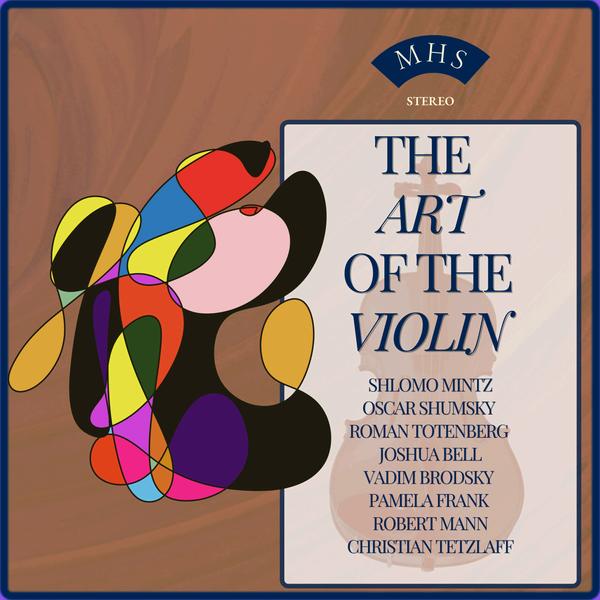
If you have any questions about our releases - Just click on the cover and you’ll be taken right to the product page on our web site. There you’ll get reviews, track listings, sound samples and more!

If you see this icon, we've restored the liner notes from this recording, and you can now read them in our interactive format
The liner notes will read like a magazine, you can flip the pages and the booklet looks great on a phone, tablet or desktop computer.

You can try before you buy. On our product pages, you will find at least one sound sample for you to try before you buy! We should soon have samples for every title on the site!





